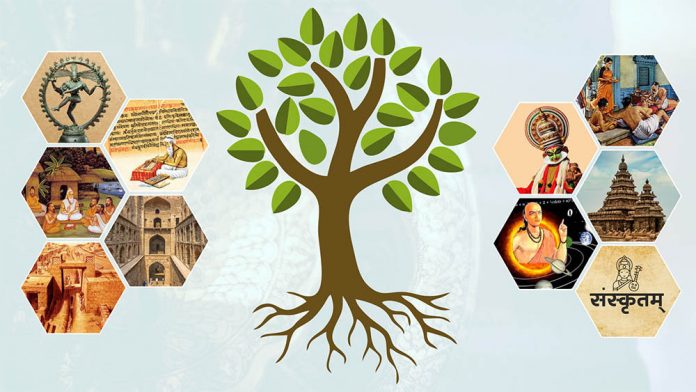Abstract (Two Modes of Erosion)
India’s Indigenous Knowledge Systems (IKS)—encompassing philosophy, sciences, medicine, arts, and pedagogy—have evolved over millennia. Yet, they have faced significant disruptions. Two watershed moments illustrate contrasting modes of erosion: the violent destruction of institutions such as the ancient Nalanda University during medieval Islamic invasions, and the systematic epistemic re-engineering of education under British colonial rule, particularly through Lord Macaulay’s 1835 Minute on Indian Education. This paper examines these episodes comparatively, highlighting how each altered the trajectory of Indian intellectual life (Two Modes of Erosion).
- Introduction
India’s intellectual traditions have been both resilient and adaptive, rooted in pluralism and inter-disciplinary synthesis. Knowledge was never fragmented into rigid silos; rather, astronomy and mathematics intertwined with metaphysics, and medicine drew from spiritual as well as empirical insights. This holistic worldview formed the bedrock of the Indic civilizational ethos. However, this flourishing landscape faced abrupt disruptions over time. The burning of Nalanda in the 12th century under Islamic incursions and the educational restructuring imposed by the British in the 19th century represent two distinct yet profound ruptures. The former was a sudden blow that physically destroyed repositories of learning, while the latter subtly reshaped intellectual traditions through a gradual reorientation of thought, pedagogy, and aspiration.

- Destruction through Conquest: Nalanda and the Islamic Invasions
Nalanda University, established in the 5th century CE, symbolized the intellectual might of India. Drawing students from across Asia, it was a melting pot of Buddhist philosophy, grammar, medicine, astronomy, and logic. Chinese monk Xuanzang described it as a place with thousands of resident scholars and a curriculum both rigorous and expansive.
In 1193 CE, Bakhtiyar Khilji’s army attacked Nalanda, setting its libraries ablaze. Accounts suggest that the fire burned for months, consuming hundreds of thousands of manuscripts. This was not only the destruction of a university but a rupture in the civilizational chain of knowledge. Buddhism, which depended on institutional continuity, faced an accelerated decline in India as monasteries lost their patronage and protective framework.
This invasion-driven disruption was immediate, visible, and catastrophic. The burning of manuscripts meant a permanent loss of unique commentaries and treatises. The dispersal of monks scattered intellectual traditions, making continuity difficult. More than just physical destruction, this event marked a cultural trauma—a violent erasure of centuries of accumulated wisdom.
- Colonization through Curriculum: British Educational Policy and Macaulay’s Minute
Centuries later, under British colonial rule, the mode of disruption shifted from violence to subtle manipulation. By the 19th century, debates raged within the East India Company about the utility of supporting traditional educational systems versus promoting English education. While indigenous institutions such as tols, pathshalas, and madrasas still functioned, they were increasingly marginalized.
Thomas Babington Macaulay’s Minute on Indian Education (1835) became the cornerstone of this intellectual shift. He famously argued for creating ‘a class of persons Indian in blood and colour, but English in taste, in opinions, in morals, and in intellect.’ The subsequent English Education Act diverted resources from Sanskrit and Persian learning to English-medium institutions. Traditional sciences such as Ayurveda, Nyaya logic, and astronomy were dismissed as inferior compared to Western knowledge.
Unlike the invasion-led destruction, colonial disruption was systemic, gradual, and epistemic. By privileging English, the British reshaped the aspirations of Indians, tying social mobility to mastery of colonial paradigms. Indigenous pedagogical systems, once the lifeblood of local communities, were left to decay without state support. The result was an internalized dependency on Western epistemology, a subtle form of intellectual colonization.
- Comparative Analysis
While the Islamic invasions represented sudden, violent ruptures, British colonialism represented a silent transformation. The former destroyed physical institutions, while the latter dismantled intellectual frameworks.
The two disruptions are not comparable in scale or intention, but together they illustrate the vulnerability of India’s knowledge systems to external pressures. Nalanda’s destruction was an act of physical violence against repositories of knowledge, whereas Macaulay’s educational policy was a psychological and cultural intervention, designed to recast the very imagination of Indian elites. One ended continuity; the other altered identity.
- Continuing Resonances
The echoes of both disruptions continue to resonate. The near-total absence of original manuscripts from Nalanda’s libraries restricts scholars’ ability to reconstruct early Buddhist and Indic scientific thought. Meanwhile, India’s education system remains deeply influenced by colonial legacies. English continues to be privileged as the language of power and social mobility, while indigenous knowledge systems often struggle for recognition.
Yet, the picture is not entirely bleak. Post-independence efforts to revive Sanskrit studies, promote Ayurveda, and integrate IKS into modern curricula represent steps toward intellectual decolonization. The National Education Policy (2020) also acknowledges the need to draw upon indigenous traditions, signaling a move toward reclamation.
- Conclusion
The story of India’s Indigenous Knowledge Systems reveals two contrasting episodes of decline: the sudden fire that consumed Nalanda and the slow reshaping of minds through Macaulay’s policies. Both were destructive, though in different ways—one annihilated, the other supplanted.
Today, as Bharat stands independent, there is both a responsibility and an opportunity to reverse these historical losses. Violence and colonialism need not define the trajectory of Indian knowledge any longer. The path forward lies in designing an education system that honors indigenous wisdom while engaging critically with global knowledge. Only through such conscious reclamation can colonial legacies be transcended, and India’s civilizational voice be restored in its full richness.
Chhath Puja: The Celebration of Nature, Energy, and Eternal Gratitude
References
- Minhaj-i-Siraj. ‘Tabaqat-i-Nasiri’. (13th century).
- Xuanzang. ‘Great Tang Records on the Western Regions’. (7th century).
- Lord Macaulay. ‘Minute on Indian Education’. (1835).
- Dharampal. ‘The Beautiful Tree: Indigenous Indian Education in the Eighteenth Century’. New Delhi: Biblia Impex, 1983.
- Sheldon Pollock. ‘The Language of the Gods in the World of Men’. Berkeley: University of California Press, 2006.
- Amartya Sen. ‘The Argumentative Indian’. London: Penguin, 2005.
- Romila Thapar. ‘The Penguin History of Early India’. London: Penguin, 2002.
- Satish Chandra. ‘Medieval India: From Sultanat to the Mughals’. New Delhi: Har-Anand Publications, 1997
Aritra Ghosh Dastidar
